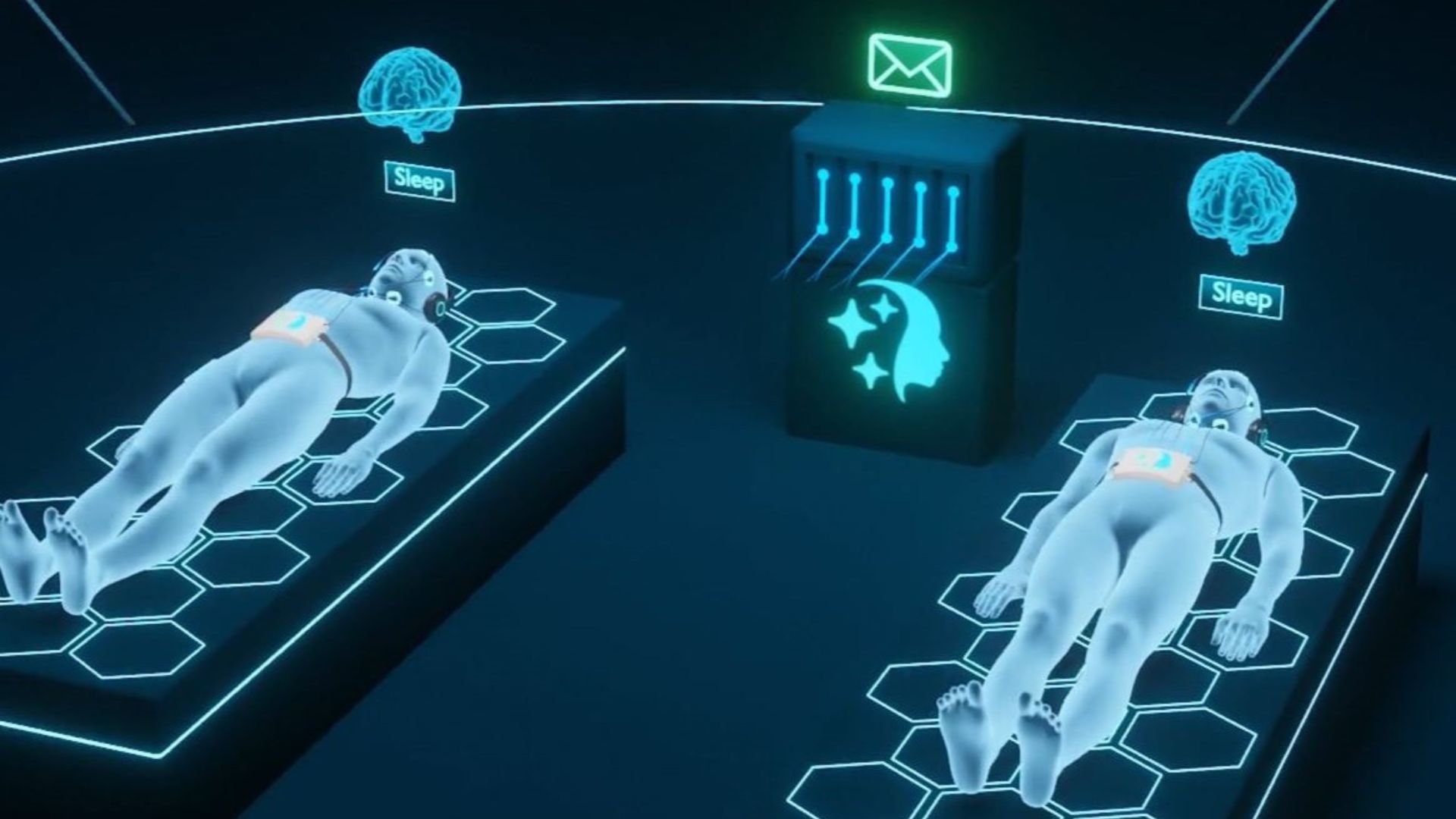Lucid dreaming study: First ever two-way communication during sleep recorded
Study participants exchanged information while lucid dreaming in a world first

In a world first, a new study conducted by a California-based neurotechnology company has recorded two-way communication between sleeping individuals during lucid dreaming. Using special tracking equipment, the groundbreaking research from REMspace recorded two individuals exchanging a simple message while lucid dreaming.
The breakthrough recording took place on September 24, which was the result of almost five years of rigorous research. Not only are these findings unprecedented, but REMspace founder and CEO Michel Raduga says they could also unlock the potential of dreams as a platform for human communication.
"Yesterday, communicating in dreams seemed like science fiction," says Raduga. "Tomorrow, it will be so common we won’t be able to imagine our lives without this technology."
- Read more: “They are coming for your dreams,” scientists warn as advertisers infiltrate our subconscious
Key takeaways from study:
- Study records first ever two-way communication between sleeping individuals during lucid dreaming
- Dreams could serve as a platform for human communication
- Real-time communication in lucid dreams may also be possible
The landmark study has reached an historic milestone, demonstrating that communication between individuals during lucid dreaming is achievable. It also taps the potential of dreams being used as a platform for human communication, and Raduga believes will pave the way for countless commercial applications. "We believe that REM sleep and related phenomena, like lucid dreams, will become the next big industry after AI," says Raduga.
- Read more: I’m a sleep coach — my 3 best tips for better sleep this World Mental Health Day
- Read more: New study will use phone apps to explore link between sleep and Alzheimer's risk
What is lucid dreaming?
According to studies, lucid dreaming refers to exceptional occurrences where we can become aware of the fact that we are dreaming. In a lucid dream, we remain physiologically asleep and immersed within a strikingly realistic dream environment, all while being aware that we are dreaming. In addition to this awareness, we can also willingly control actions within the dream. Lucid dream occurs during the REM sleep stage.
Two-way communication during lucid dreaming
The REMspace study was carried out on September 24, 2024, taking place at the participants' respective homes. As they slept, their brain waves and other polysomnographic data were tracked remotely by a specially developed equipment.
When this equipment picked up that a participant had entered a lucid dream, it sent word in Remmyo (an artificial dream language designed to be detectable through sensitive sensors) to the participant via earbuds. The participant repeated the word in his dream, and this was then stored and sent to another participant as she entered a lucid dream. She confirmed the message upon awakening, marking the first-ever message exchanged in dreams.
Get instant access to breaking news, the hottest reviews, great deals and helpful tips.
What this breakthrough means for the future of our sleep

Thanks to the unique psychological potential of lucid dreams, Raduga believes that this breakthrough could lead to more research into the benefits of lucid dreaming for waking life.
For instance, as lucid dreams are so lifelike, the scenarios people face in lucid dreams could help them deal with similar scenarios when they occur in real life in real life. "It aids in reducing nightmares, tackling phobias, overcoming personal insecurities, waking up feeling more refreshed, and more," Raduga tells us. "When individuals become accustomed to confronting a phobia in a lucid dream, the benefits often extend into their waking life."
The CEO adds: "The same principle applies to skill development. Research indicates that the brain perceives little difference between practicing motor or cognitive skills in a lucid dream and doing so while awake. Since the physical world imposes many constraints, it can be challenging to master complex skills. In lucid dreams, however, those limitations do not exist.
"Communication within dreams — whether between individuals or between individuals and digital systems—has the potential to enhance control over these processes. For instance, one could have a guide or instructor in a lucid dream to assist them."
How dreams will become a place for communication
Due to the success of the study, Raduga concludes it's only a matter of time before communicating with each other or smart home devices while lucid dreaming becomes commonplace. He tells Tom's Guide that the first commercial devices for dream communication will be available next year, though only a small segment of the population will have access to them initially.
"Each year, this technology will improve, making it easier for people to initiate lucid dreams and communicate within them," he explains. "Between 2030 and 2035, these devices will likely become as common and essential as smartphones."

Frances Daniels is a PPA-accredited journalist and Sleep Staff Writer at Tom's Guide with an MA in Magazine Journalism from Cardiff University. Her role includes covering mattress and sleep news and writing sleep product reviews and buyer's guides, including our Best Hybrid Mattress 2025 guide. She is interested in the relationship between sleep and health, interviewing an array of experts to create in-depth articles about topics such as nutrition, sleep disorders, sleep hygiene, and mattress care. She is also our specialist on mattress toppers — producing bed topper reviews and taking care of our Best Mattress Toppers 2025 guide — and leads content relating to fiberglass-free beds for a non-toxic sleep. Outside of Tom's Guide, she has written for Ideal Home and Marie Claire.

